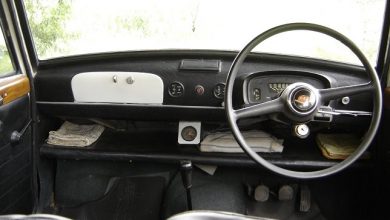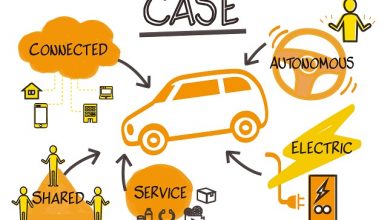Changing Landscape of OTA Updates

OTA Over-The-Air software or firmware update is no novice word in the industry, it has become integral part of every embedded device. An update in software creates flexibility and configurability of a device. It can be an improvement in performance, fixing an issue, security enhancement and new feature deployment for that device.
In the early days, most of the devices and vehicles are pre-dominantly mechanical, electrical and electronic components with very limited software. In case any updates were needed they used to happen using floppy disks or customers visiting service centres or someone from service centres visiting customer place. In one scenario this is still happening, Boeing 747 still receives critical updates via a floppy disk.
Last couple of decades, there is a drastic evolvement of technology with increase in software defined devices ranging from desktops, mobile phone, embedded devices, IoT devices, automotive vehicles, satellites and airplanes. As a contemporary development, connectivity technologies involving wireless standards like 802.11 a/b/g/n/ac, 2G, 3G, LTE, 4G and 5G also evolved. In addition, there is a drastic growth in semiconductor manufacturing industry, where processing chips like microprocessors, microcontrollers and GPU’s are moving from 90 nm towards 5 nm by offering high speeds at low power and also high capacity memory chips availability at lesser cost. This led to semiconductor companies offering highly integrated, performance optimized, safe and secured microcontroller based System On Chip and System in Package solutions. All the above developments along with complex AI algorithms and cloud solutions catalysed the growth.
As the software-defined devices are increasing so is the demand for updates, as software is being prone to security leaks, performance impact and bugs. Updates during early days of software defined devices like for desktops involved a managed process where presence of users in front of desktop, update server maintenance and support from an IT personal was needed, making the process more cumbersome, causing delays in updates and leading devices vulnerable to malicious attacks. This is true in scenarios where updates are related to security.
With the combination of latest connected technologies along with cloud solutions. Over the air updates solved the problem by letting updates happen silently with minimum user input. This led to popularity of adopting OTA updates in most of the embedded devices across the industry, not leaving an exception in automotive.

Perceiving the update step varies from users to manufacturers or software solution providers. From the user point of view the benefits include
- Easy to install, it is just a click away where users by ensuring good connectivity just accept and install updates
- Users device/vehicle gets better over time
- Improved device/vehicle security
But for manufacturer the steps are many fold –
From Maintenance point of view
- Identify the existing bugs
- Perform validation so as to avoid regressions
- New feature verification
- Check if no performance impact after the update
- Perform long hour stress testing
- Check negative scenario
- Validate the changes and perform compatibility checks on multiple variants/models
- Ensure that their update server is secured
From Benefits point of view
- Increase in product life time
- Reduce recall costs
- Resolve issues remotely
- Update multiple devices at the same time
- Saves billions of dollars
- New business models with customization
- Push value-added-services
From System point of view
- Maintenance of two partition regions in hardware – inactive and active regions
- Download the update into inactive region
- Switch over logic from inactive to active and vice versa
- Seamless restoration of the old settings
Automotive industry is at the forefront of adopting OTA. The presence of OTA support in automotive already helped auto makers to save billions of dollars thus making it an inevitable feature in all future cars. The type of updates that are happening in automotive vehicles including but not limited to, maps, connected parking feature, connected charging features, personal assistant features, infotainment updates, driver assistant features
The first ever OTA software update happened by Tesla in their car model in the year 2012, the update was done using 3G or WIFI data connection. Since then Tesla has delivered around 56 OTA updates to its models. There are significant number of OTA updates adoption seen from 2020 onwards on various car models from different OEMs.
- In May 2020, BMW started pushing OTA updates to some of its models. As of June 2021, BMW started rolling out software updates to 1.3 million vehicles with BMW OS.
- In Sept 2021, Volkswagen announced OTA update support for their models as part of their ACCELERATE strategy to enter into new business models by making the updates as customer centric.
- In May 2021, General Motors (GM) also announced its new “digital nerve system” which will enable over-the-air software updates on all GM vehicles
- Starting March 2021, Ford started rolling out OTA software updates for their selective models. It is aiming to have 33 million vehicles with OTA capability by the year 2028.
Update handling in automotive vehicles is complex. With over more than 100 heterogenous multi-core ECUs (Electronic Control Unit) supporting various functionalities related to safety, comfort, connectivity and infotainment, there is an increasing amount of software components in vehicle that includes firmware, configurations, settings and maps. Flashing the updates on appropriate MCU, availability of enough memory and direct connection to internet plays an important role. As the ECUs are connected directly to internet they are exposed to wide range of attacks. Some of the attacks being Read updates, Deny updates, deny functionality and control
In Automotive OTA architectures there are three main building blocks:-
- Cloud Server – An update generator
- Vehicle – An update installer
- Connectivity link – A communication protocol

There is no single OTA framework standard used across the industry. A framework which offers secured update, proper campaign management and easy roll back mechanism so as to avoid bricking of the device is essential. Some of the frameworks that are used in automotive industry are:-
- Red Bend from Harman
- Movimento from Aptiv
- Bosch with ESCRYPT and Microsoft is building software platform in vehicles that support over-the-air updates
- OTAmatic from Airbiquity – A cloud-based OTA service that includes OTA orchestration, campaign management, software and data management, and Uptane based security framework capabilities.
- Edge Sync from Wind River – A highly modular OTA solution
- Sibros – Safe, Uptane secured, AWS, GC and Azure cloud ready OTA platform
Along with these proprietary standards, there. are alliances that are getting formed among OEM automakers to bring out a standardized OTA solution. Suzuki, Subaru, Daihatsu, Toyota and Mazda are working on standardizing how vehicles communicate with the cloud, to improve safety and make connected services better.
As OTA update started becoming mandatory feature in most of the devices, an industry wise standard platform definition that takes care of updates in a safer, secured, faster and reliable way is much needed. Today, there are several proprietary OTA update technologies from various system integrators and OEMs. These different OTA update solutions are leading to compatibility issues, increase in development costs, time to market and risk of errors.
A standardized platform with standardized message formats and responses will help chip suppliers, system integrators and OEMs to simplify development, save time and costs. The saved time can be used to develop new type of update features.
In case of automotive OTA updates, as we move to autonomous driving, focus on customer engagement within the vehicle during the tenure of travel is gaining importance. Customer may be interested in news updates, specific genre music, movies, office work and many more. Pulling the appropriate updates, using the car connectivity solutions will solve the problem. In some other scenarios, clients may be on a vacation trip to a new place, pulling updates about the visiting places around the vacation spot and knowing the history of that place will become a new phenomenon. This is more like the car serving as a local guide and the updates in this case will act as a temporary updates which automatically gets deleted at the end of trip.
Customer centric update, in a shared mobility scenarios where there are multiple drivers of the car, all their personalized needs be it infotainment, genres, navigation maps, audio books, seat positioning etc., will be stored in the cloud. Basing on the person driving the car, they can initiate updating the car remotely from mobile using a secured channel so as to make them travel ready. The storage of these customizations along with new recommendations will be maintained by OEMs creating a revenue model for them.
A driver moving from one city to a smart city, receives updates related to connectivity and infrastructure needs, so as to help them in making their journey more smoother and leverage the benefits from smart city infrastruture. The same can become a temporary subscription model as the OEM’s get paid for the same creating a new source of revenue.
Going forward in future it will be no surprise, you buy a basic car with all the required hardware, as you keep on paying your EMI, an incremental feature update will be delivered over the air creating a new business potential and a win-win situation to both the manufacturer and user.
Author:

Chandrasekhar Morisetti
Director, Automotive and IoT
Innobox Systems Pvt. Ltd
A technical enthusiast with an experience of over 20 years, Chandra is responsible for Innobox’s automotive and IoT division. His acumen in the technical know-how of multiple verticals helped in winning customer confidence and customer engagements. He is a detail-oriented person which makes him unique and helped projects not to miss any requirement.
Published in Telematics Wire


